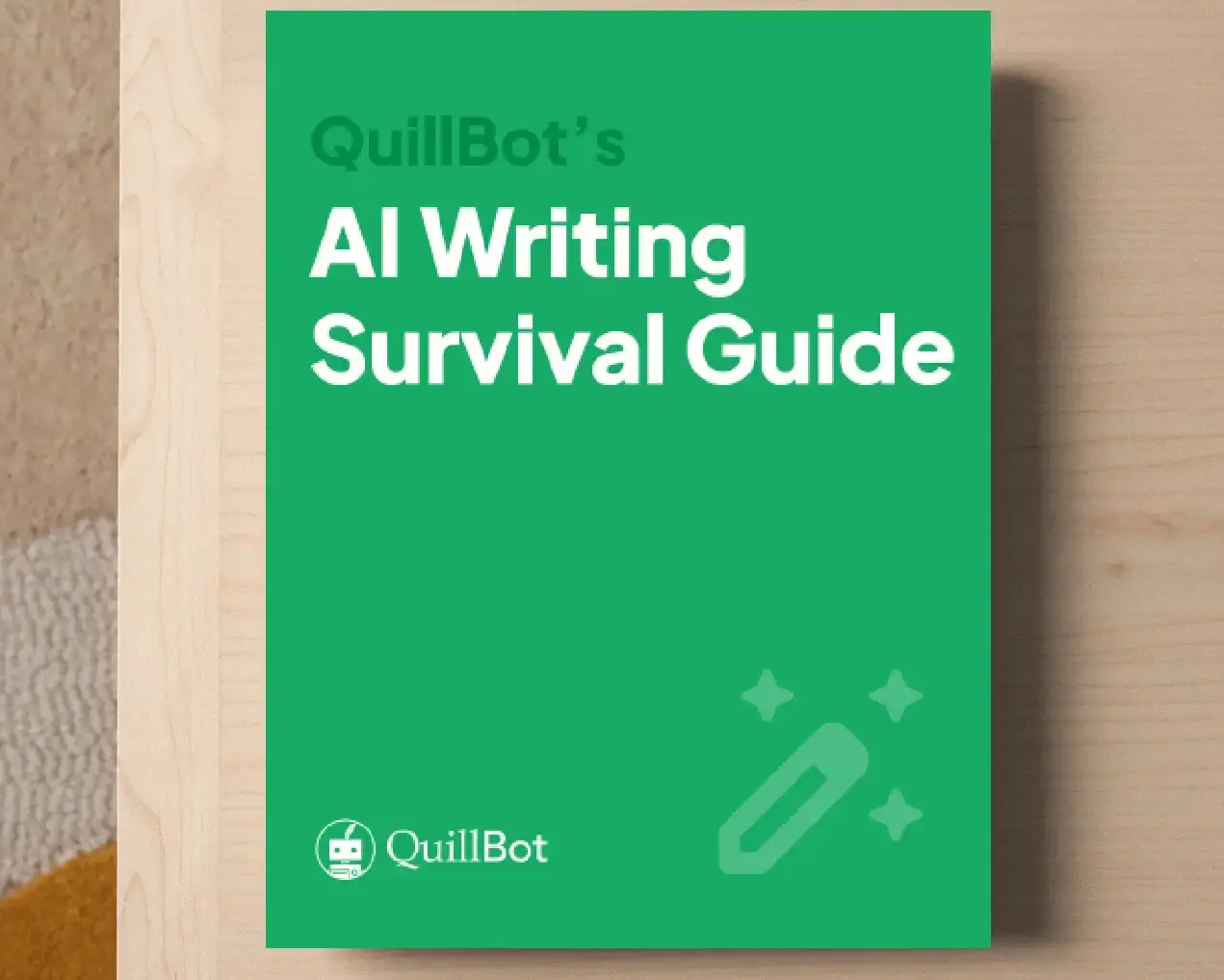How to Use an AI Study Guide Maker
A study guide is an organized outline of the information that an exam will cover. The information that the study guide includes could be facts, formulas, historical figures, concepts, vocabulary, or theories, depending on the academic subject and the unit of study.
Making a study guide is one of the best ways to prepare for an exam for many reasons:
- You’re more likely to remember information that you’ve written down.
- You can identify your strengths and weaknesses to set studying priorities.
- You’ll have a clear plan for study sessions so that you can stay on track.
Sometimes writing your own study guide isn’t feasible, especially if you’re pressed for time or studying for a massive standardized test. In these situations, an AI study guide maker can create one for you. QuillBot’s AI study guide maker is completely free to use. Keep reading to learn how to make a great study guide with or without the help of AI.
How to create a study guide
Follow these steps to write a study guide that sets you up for success.
1. Identify the main topics that will be on the exam
Review the syllabus, class lecture notes, discussion questions, and course textbook. If the test will cover material from a textbook, look at chapter titles and subheadings. Using these resources, make a list of the main content areas or topics that will be covered on the test. Each of these areas will be a heading for your study guide.
- Cell organelles
- Photosynthesis
- Cellular Respiration
- Mitosis vs. Meiosis
The three topics will be headings on his study guide.
2. Break down each content area
For every topic on your list, gather and organize the key information you’ll need to remember. This includes:
- Definitions and key terms
- Important facts or concepts
- Formulas or equations
- Theories, laws, or models
- Important people and their contributions
- Examples or diagrams if needed
Most of this information should be in your textbook or lecture notes.
Cell organelles
Nucleus – controls cell activities, contains DNA
Mitochondria – powerhouse, produces energy (ATP)
Ribosomes – protein synthesis
Endoplasmic Reticulum
- Rough ER – processes proteins
- Smooth ER – synthesizes lipids
Golgi Apparatus – packages and ships proteins
Lysosomes – break down waste
Chloroplasts (plants only) – site of photosynthesis
Cell Wall (plants only) – structural support
Cell Membrane – regulates what enters/exits the cell
Photosynthesis
Key Formula: 6CO2+6H2O+sunlight→C6H12O6+6O2
Occurs in: Chloroplasts (plants)
Two main stages:
- Light-dependent reactions – require sunlight, produce ATP and O₂
- Calvin Cycle (light-independent) – uses CO₂ and ATP to make glucose
3. Prioritize what you don’t know
As you’re making the study guide, mark any terms or details that are less familiar or harder to remember than others. Review the lecture notes and class readings that cover these details, and add additional notes to your study guide. Schedule extra time to review these sections.
Using an AI study guide maker
An AI study guide maker is an invaluable time saver, as long as you use effective prompts. Follow these steps to get the most out of QuillBot’s AI study guide maker.
1. Gather your source material
Collect the course documents that cover the information that will be on your test so that you can paste or upload these with your prompt. Examples include:
- Textbook chapter
- Lecture notes
- Class slides
- Past quizzes or assignments
Skip this step if you’re using QuillBot to prepare for a standardized test (e.g., SAT study guide or GRE study guide).
2. Write a clear prompt
Write a prompt that includes the academic subject (or the name of the standardized test), the focus of your study guide (e.g., the name of the unit or chapter), and the type of information your study guide should include. For example, you might ask QuillBot to include:
- Formulas or equations
- Vocabulary words
- Key researchers or historical figures
- Practice questions
3. Review and refine
Review QuillBot’s initial output, and identify which parts of your study guide you’d like to develop further. Write a follow-up prompt to request those adjustments.
Prompt for QuillBot’s study guide maker
Frequently asked questions about how to use an AI study guide maker
- How do you write literature study guides?
-
To write literature study guides for the poetry or fiction that will be on a test, outline each text’s literary elements (e.g., theme, setting, plot, characters) and literary devices (e.g., metaphor). Use these for the study guide headings.
Beneath each heading, fill in details from the poem, story, play, or novel (e.g., a list of the main characters). You may also wish to write important quotes on the study guide.
QuillBot’s free AI study guide maker can instantly create literature study guides when you share the title of the work in your prompt.
- How do I create a study guide for students?
-
To create a study guide for your students, make a list of the content areas that the exam will cover. For each content area, write a list of facts, formulas, or practice questions that students can use to prepare for the test.
QuillBot’s free AI study guide maker can do all of this for you if you provide it with a copy of your lecture notes, course readings, or similar documents.
Cite this Quillbot article
We encourage the use of reliable sources in all types of writing. You can copy and paste the citation or click the "Cite this article" button to automatically add it to our free Citation Generator.
QuillBot. (2025, September 18). How to Use an AI Study Guide Maker. Quillbot. Retrieved December 24, 2025, from https://quillbot.com/blog/ai-writing-tools/how-to-use-an-ai-study-guide-maker/


